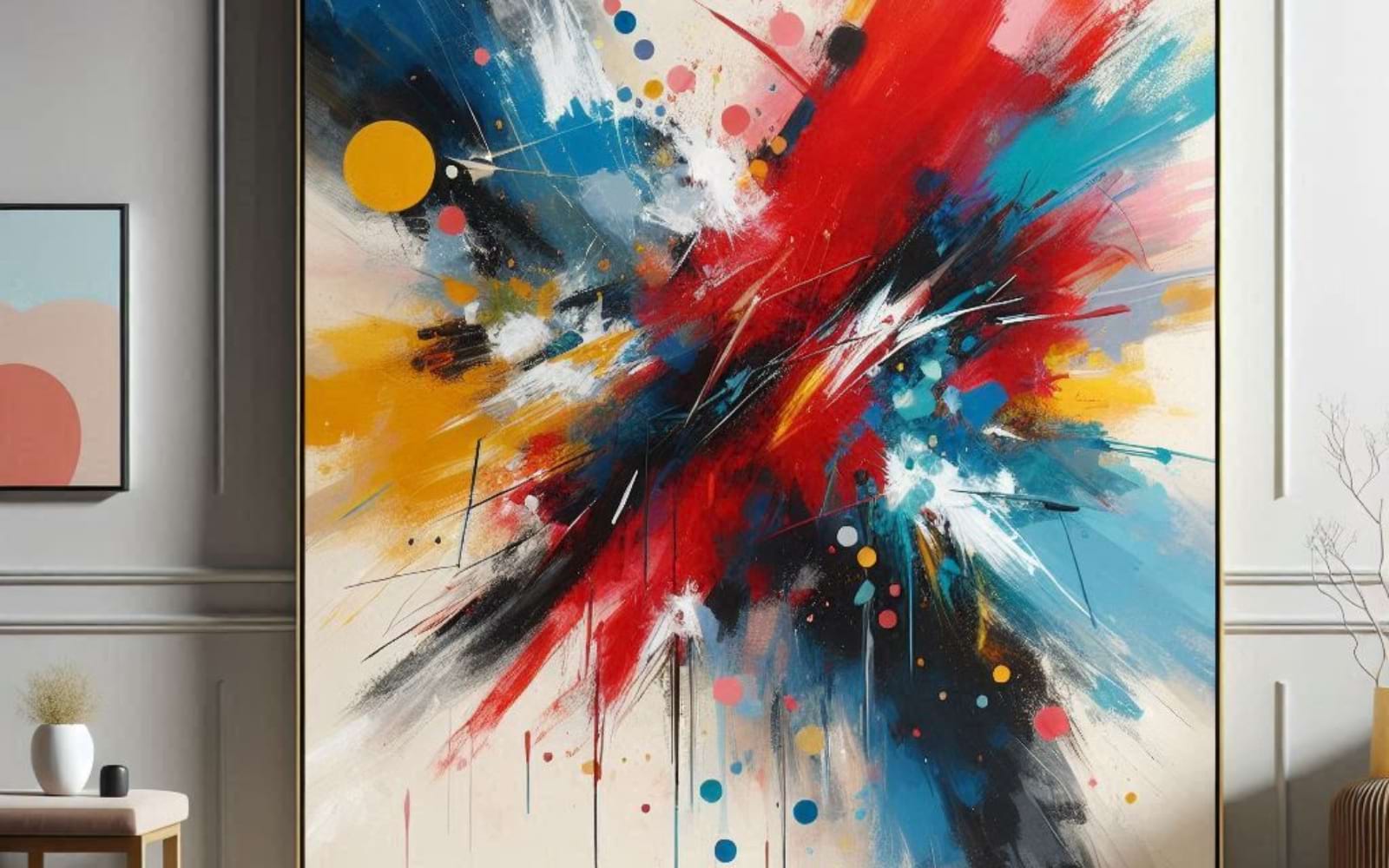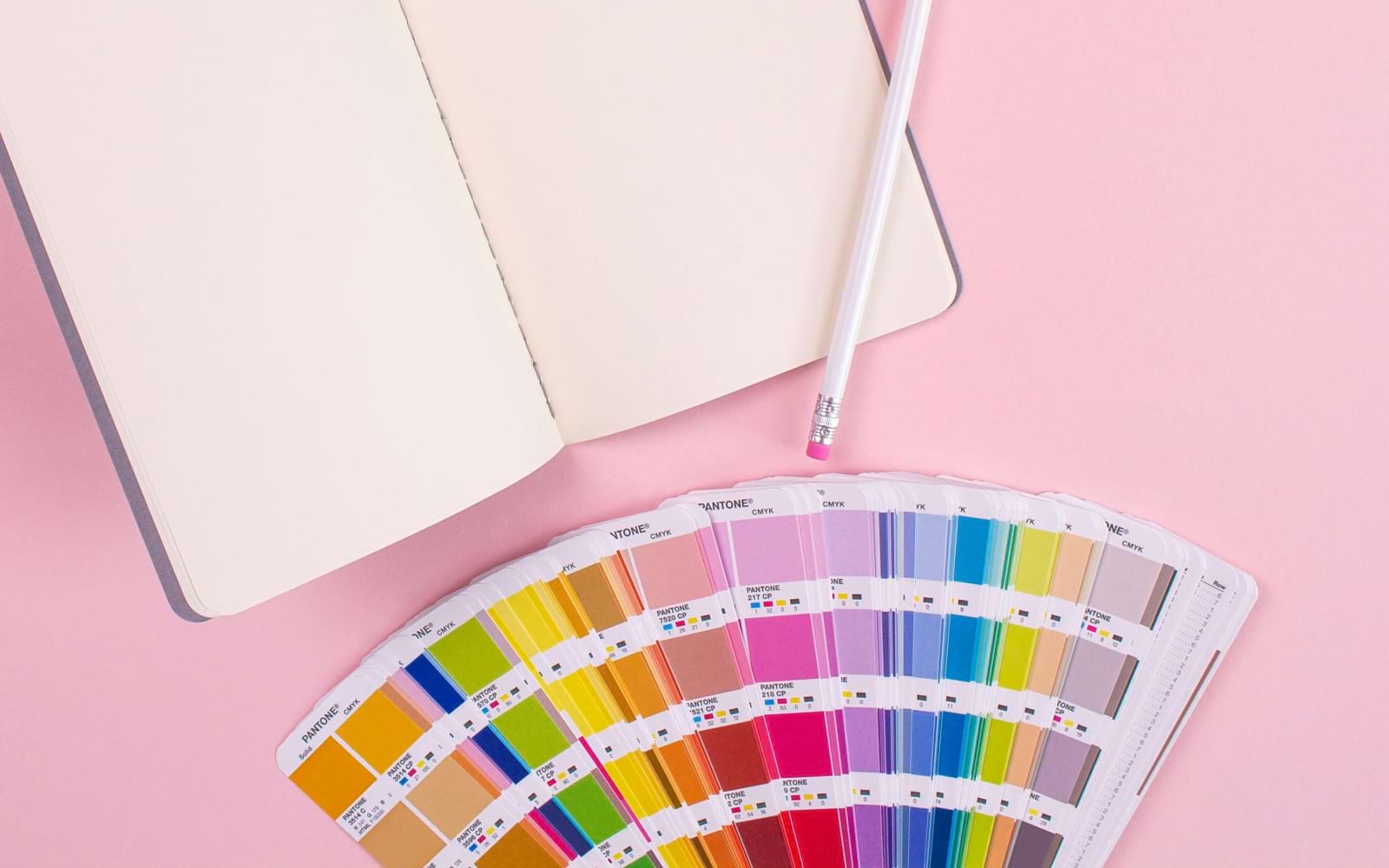Design
The Ultimate Guide to Graphic Design: Everything You Need to Know What is Graphic Design and Why it is Important.
09.02.2025
By Shaikh Asif

Design
09.02.2025
By Shaikh Asif
By exploring the essential elements, principles, and theoretical foundations of graphic design, we aim to equip you with the knowledge needed to create compelling, effective, and strategic designs that elevate your brand and engage your audience.
Graphic design is a creative discipline that combines art and technology to communicate ideas visually. It involves the use of images, typography, and color to create visual representations that inform, captivate, and persuade an audience. Graphic design is all around us, shaping the way we interact with the world—from the logos and packaging of products we buy to the websites and mobile apps we use daily.
At its core, graphic design is about solving problems and creating solutions through visual communication. It is a multidisciplinary field that draws on various art forms, including illustration, photography, and animation, to craft compelling visuals that serve a purpose. Whether it's enhancing user experience, building brand identity, or conveying information, graphic design is the bridge between a message and its audience.
Graphic design is more than just aesthetics; it’s a vital component of effective communication and branding. In today's digital age, a strong visual presence can make or break a business. As a premier branding and design agency, Alitestar specializes in transforming brands through top-notch graphic design, branding, and rebranding services. Our expertise spans various industries, helping businesses create memorable and impactful visual identities.

In today's visually-driven world, graphic design is more than just an artistic endeavor; it's a critical component of effective communication and business strategy. The importance of graphic design extends across various domains, influencing how businesses and brands are perceived, how information is conveyed, and how audiences engage with content. Let's explore the multifaceted importance of graphic design and why it should be a priority for businesses, startups, entrepreneurs, and creative professionals.
1. Building Brand Identity
Graphic design plays a crucial role in creating and maintaining a brand's identity. It involves developing a cohesive visual language that reflects a brand's values, personality, and message. This includes logos, color schemes, typography, and other visual elements that make a brand recognizable.
Key Points:
Consistency: Consistent design elements across all brand materials build recognition and trust. A study by Lucidpress found that consistent branding can increase revenue by up to 23%.
Differentiation: Unique and well-designed visuals help differentiate a brand from its competitors, making it stand out in a crowded market.
Professionalism: High-quality design conveys professionalism and credibility, essential for gaining customer trust.
2. Enhancing Communication
Effective graphic design simplifies complex information and enhances communication. Visuals can convey messages more quickly and clearly than text alone, making it easier for audiences to understand and retain information.
Key Points:
Visual Appeal: Attractive designs capture attention and make content more engaging. According to a study by 3M, visuals are processed 60,000 times faster than text.
Clarity: Well-designed infographics, charts, and diagrams can break down complex data into digestible formats, improving comprehension.
Persuasion: Visual elements can evoke emotions and influence perceptions, playing a key role in persuasive communication.
3. Boosting User Experience (UX)
Graphic design is integral to creating positive user experiences, particularly in digital products like websites and mobile apps. Good design enhances usability, accessibility, and overall satisfaction.
Key Points:
Navigation: Clear and intuitive design helps users navigate interfaces easily, reducing frustration and increasing engagement.
Aesthetics: Visually appealing designs make digital experiences enjoyable, encouraging longer interactions and repeat visits.
Functionality: Well-designed interfaces are functional and efficient, improving the overall usability of a product.

4. Supporting Marketing and Advertising
Graphic design is a cornerstone of effective marketing and advertising. From social media graphics to print ads, design elements are used to attract, inform, and persuade potential customers.
Key Points:
Attention-Grabbing: Eye-catching designs stand out in the cluttered digital and physical spaces, capturing the audience's attention.
Brand Messaging: Design elements reinforce brand messaging and ensure that marketing materials are aligned with brand identity.
Conversions: Well-crafted visuals can lead to higher conversion rates. According to HubSpot, content with relevant images gets 94% more views than content without.
5. Driving Engagement and Interaction
Graphic design is key to creating content that engages audiences and encourages interaction. Whether through social media posts, email newsletters, or website visuals, good design fosters active engagement.
Key Points:
Social Media: Visual content is more likely to be shared, liked, and commented on, increasing organic reach and engagement. According to Buffer, tweets with images receive 150% more retweets than those without.
Interactive Content: Engaging visuals and interactive elements (e.g., quizzes, infographics) encourage users to interact with content, deepening their connection with the brand.
Storytelling: Visual storytelling through design elements can make content more memorable and impactful, enhancing the overall engagement.
6. Improving Sales and Growth
Graphic design has a direct impact on sales and business growth. Attractive and effective design can influence purchasing decisions and drive business success.
Key Points:
Product Presentation: Well-designed packaging and product visuals can attract customers and influence their buying decisions.
Advertising Effectiveness: High-quality design in advertising materials increases their effectiveness, leading to better ROI.
Customer Loyalty: Consistent and appealing design helps build brand loyalty, encouraging repeat business and long-term growth.
Graphic design is built upon a foundation of essential elements that, when used effectively, create visually appealing and impactful designs. Understanding these elements and their applications is crucial for any designer aiming to convey messages clearly and creatively. Let's delve into the primary elements of graphic design and explore how to use them effectively.
1. Line
Lines are the most basic element of design, used to connect two points, guide the viewer's eye, and create shapes. They can be straight, curved, thick, thin, solid, dashed, or dotted.
Usage Tips:
Structure and Organization: Use lines to create divisions and organize content in layouts.
Movement and Direction: Guide the viewer's eye through the design using lines that direct attention to key elements.
Texture and Depth: Combine different line styles to add texture and depth to your design.
2. Shape
Shapes are defined areas created by lines and can be geometric (squares, circles, triangles) or organic (irregular, free-form). Shapes form the building blocks of design, creating space, structure, and balance.
Usage Tips:
Visual Interest: Use a variety of shapes to create a dynamic and engaging composition.
Symbolism: Incorporate shapes that have cultural or symbolic meanings to reinforce your message.
Negative Space: Utilize shapes to create negative space, ensuring your design is balanced and uncluttered.

3. Color
Color is a powerful element that evokes emotions and sets the mood. It consists of hue, saturation, and brightness, and can be combined to create color schemes that enhance a design's aesthetic and communicative properties.
Usage Tips:
Color Schemes: Use complementary, analogous, or triadic color schemes to create harmony and balance.
Emotional Impact: Choose colors that align with the emotional response you want to evoke in your audience.
Brand Consistency: Ensure your color choices are consistent with your brand identity to strengthen brand recognition.
4. Typography
Typography is the art of arranging text in a visually appealing way. It involves choosing typefaces, adjusting font sizes, and aligning text to create readable and aesthetically pleasing compositions.
Usage Tips:
Font Pairing: Combine different typefaces (serif and sans-serif) to create contrast and hierarchy.
Readability: Ensure text is legible by choosing appropriate font sizes and line spacing.
Alignment and Spacing: Align text consistently and use adequate spacing to enhance readability and visual appeal.
5. Texture
Texture refers to the surface quality of a design, which can be tactile (physical texture) or visual (the illusion of texture). It adds depth and dimension to a design.
Usage Tips:
Backgrounds and Overlays: Use textures as backgrounds or overlays to add richness and interest to your design.
Contrast: Combine smooth and rough textures to create visual contrast and emphasize key elements.
Subtlety: Use textures subtly to avoid overwhelming the viewer and maintain a clean design.
6. Space
Space, or negative space, refers to the empty areas around and between elements in a design. It plays a crucial role in defining the structure and organization of a layout.
Usage Tips:
Balance: Use negative space to create a balanced and harmonious composition.
Focus: Ensure there is enough space around key elements to make them stand out and be easily noticed.
Clarity: Avoid clutter by incorporating ample negative space, enhancing the overall clarity and readability of your design.
7. Form
Form refers to the three-dimensional quality of an object, giving it depth and volume. It can be achieved through shading, perspective, and other techniques.
Usage Tips:
Depth: Use shadows, highlights, and gradients to create the illusion of depth and form.
Realism: Incorporate realistic forms to make designs more lifelike and engaging.
Perspective: Apply perspective techniques to create a sense of space and dimension.
8. Balance
Balance refers to the distribution of visual weight within a design. It can be symmetrical (evenly balanced) or asymmetrical (balanced through contrast).
Usage Tips:
Symmetry: Use symmetrical balance for a formal, stable look.
Asymmetry: Employ asymmetrical balance to create dynamic and interesting compositions.
Visual Weight: Balance visual weight by considering the size, color, and placement of elements.
Understand the Purpose: Clearly define the goal of your design and the message you want to convey. This will guide your use of design elements.
Know Your Audience: Consider the preferences and expectations of your target audience. Tailor your design elements to resonate with them.
Create a Hierarchy: Use contrast, size, and placement to establish a visual hierarchy, guiding viewers to the most important information first.
Maintain Consistency: Ensure consistency in the use of colors, fonts, and styles to create a cohesive design that aligns with your brand identity.
Experiment and Iterate: Don’t be afraid to experiment with different combinations of design elements. Gather feedback and make iterative improvements to refine your design.
Graphic design plays a pivotal role in shaping perceptions and driving actions. According to a study by Adobe, companies that prioritize design outperformed their peers by 219% on the S&P Index over a decade. This statistic highlights the tangible business benefits of investing in quality design.
A well-designed visual can make a significant impact in just a few seconds. Research by Microsoft indicates that the first 10 seconds are critical for making a positive first impression on website visitors. This underscores the importance of visually engaging design in capturing attention and retaining visitors.
Graphic design is applied across various media and industries. Some common applications include:
Branding and Identity: Creating logos, business cards, and brand guidelines that establish a consistent visual identity.
Marketing and Advertising: Designing brochures, posters, banners, and social media graphics to promote products and services.
Web and App Design: Developing visually appealing and user-friendly websites and mobile applications.
Packaging Design: Creating packaging that attracts consumers and communicates brand values.
Publication Design: Designing layouts for books, magazines, newspapers, and digital publications.
At Alitestar, we understand the transformative power of graphic design. Our expert team is dedicated to helping businesses create compelling visual identities that drive engagement, communicate effectively, and achieve business goals. We offer a comprehensive range of services, including branding, rebranding, brand strategy, and graphic design, tailored to meet the unique needs of startups, entrepreneurs, and established businesses.
Graphic design theory provides the essential principles and concepts that underpin effective visual communication. By understanding and applying these theories, designers can create impactful and cohesive designs that resonate with audiences and achieve business objectives.
For those seeking to harness the power of graphic design theory in their branding and marketing efforts, Alitestar offers expert services tailored to meet your unique needs. Contact us today to discover how we can help you create visually compelling designs that drive your brand forward.


Shaikh Asif is an Award-winning designer, director, strategist, and educator. He’s the Lead Strategic Brand Designer and Art Director of The Alitestar— a strategic branding and design agency that helps startups, ambitious CEOs, and passionate entrepreneurs to achieve success and ultimately create unforgettable brand experiences.